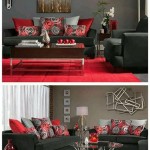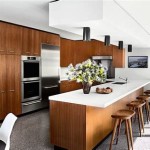Decorating Ideas For Open Concept Living Room Dining And Kitchen
Open concept living spaces, combining the living room, dining area, and kitchen into one cohesive area, have become increasingly popular in modern homes. This layout offers a sense of spaciousness and promotes interaction, but decorating these interconnected zones can present unique challenges. Successfully decorating an open concept space requires a thoughtful approach to create a harmonious flow while defining each area's function.
One of the primary design principles for open concept living is establishing visual continuity. This can be achieved through a consistent color palette throughout the entire space. While variations in shades and tones are acceptable, maintaining a unifying color scheme helps tie the areas together. For example, a neutral base color like gray or beige can be used on walls, with accent colors introduced through furniture, textiles, and accessories. This creates a cohesive backdrop that allows the eye to move seamlessly from one area to the next.
Flooring also plays a crucial role in unifying an open concept layout. Maintaining the same flooring material throughout the space is a highly effective way to create visual flow and continuity. If different flooring materials are desired for practical reasons, such as tile in the kitchen and hardwood in the living area, choosing materials with similar tones and textures can help maintain a sense of cohesion. Area rugs can then be strategically placed to define individual zones within the larger space.
Defining zones within the open concept layout is essential for maintaining functionality and preventing the space from feeling too vast and undefined. While maintaining visual continuity is important, creating distinct areas for each activity helps organize the space and improves its usability. This can be achieved through several design strategies, including furniture placement, area rugs, and lighting.
Strategic furniture placement is a key element in defining zones. For instance, positioning the sofa and armchairs to create a conversational grouping clearly delineates the living area. Similarly, placing the dining table and chairs in a designated spot establishes the dining zone. Care should be taken to ensure that furniture placement does not obstruct the flow of traffic between zones and maintains sightlines throughout the space.
Area rugs are a versatile tool for defining zones and adding visual interest. A large rug in the living area anchors the furniture grouping and separates it from the dining area. Similarly, a rug placed beneath the dining table defines the dining zone and adds a touch of warmth and style. Choosing rugs that complement the overall color scheme and furniture style helps create a harmonious look.
Lighting plays a crucial role in both defining zones and creating ambiance. Different lighting fixtures can be used to highlight each area and create a distinct mood. For example, pendant lights above the kitchen island provide task lighting and define the kitchen area. A chandelier or pendant light over the dining table creates a focal point and sets the stage for dining. Floor lamps and table lamps in the living area provide ambient lighting and create a cozy atmosphere.
Incorporating consistent design elements throughout the open concept space helps tie the areas together. This can include repeating patterns, textures, and materials in different areas. For example, using throw pillows with similar patterns in both the living area and dining area creates a subtle connection between the two zones. Similarly, incorporating wood accents in the kitchen, dining area, and living area creates a cohesive and harmonious look.
Maintaining a balance between open space and defined areas is crucial for successful open concept living. While the open layout promotes a sense of spaciousness, defining distinct zones provides functionality and prevents the space from feeling too vast. This balance can be achieved through careful consideration of furniture placement, rug placement, and lighting design.
The use of vertical space is often overlooked in open concept designs, but it can be a valuable asset, particularly in maximizing storage and adding visual interest. Tall bookshelves, wall-mounted cabinets, and vertical artwork can draw the eye upward and create a sense of height. These elements can also be used to incorporate additional storage without encroaching on valuable floor space.
Finally, personalizing the space with decorative accessories and artwork is essential for creating a warm and inviting atmosphere. These elements add character and reflect the occupants' personal style. Carefully chosen accessories, such as throw pillows, vases, and artwork, can enhance the overall design and create a cohesive and personalized space.
Consider traffic flow when arranging furniture and defining zones. Ensure that there is ample space to move comfortably between the different areas without obstructing pathways. This is especially important in high-traffic areas such as the kitchen and dining area.
Incorporating greenery through houseplants adds life and vibrancy to an open concept space. Plants can also help to visually separate different zones and improve air quality. Choose plants that thrive in the lighting conditions of your space and complement your overall design aesthetic.

Open Plan Living Ideas Maid2match

Open Concept Living Room Design Ideas Kitchen Layout Contemporary Apartment

Making The Most Of Your Open Concept Space Brock Built

The Best Open Concept Kitchen Design Trends Of 2025 Small L Living Room Home Decor

18 Great Room Ideas Open Floor Plan Decorating Tips

Stunning Open Concept Living Room Ideas
:strip_icc()/open-floor-plan-design-ideas-21-rikki-snyder-4-c0012504a6594446932c2893164d3c95.jpeg?strip=all)
22 Open Floor Plan Decorating Ideas Straight From Designers

Making The Most Of Your Open Concept Space Brock Built

Bring Kitchen Living Room Design Ideas To Life

Open Concept Kitchen And Living Room 55 Designs Ideas Cuisines Dans Salon Décoration De Cuisine Ouvert
Related Posts







